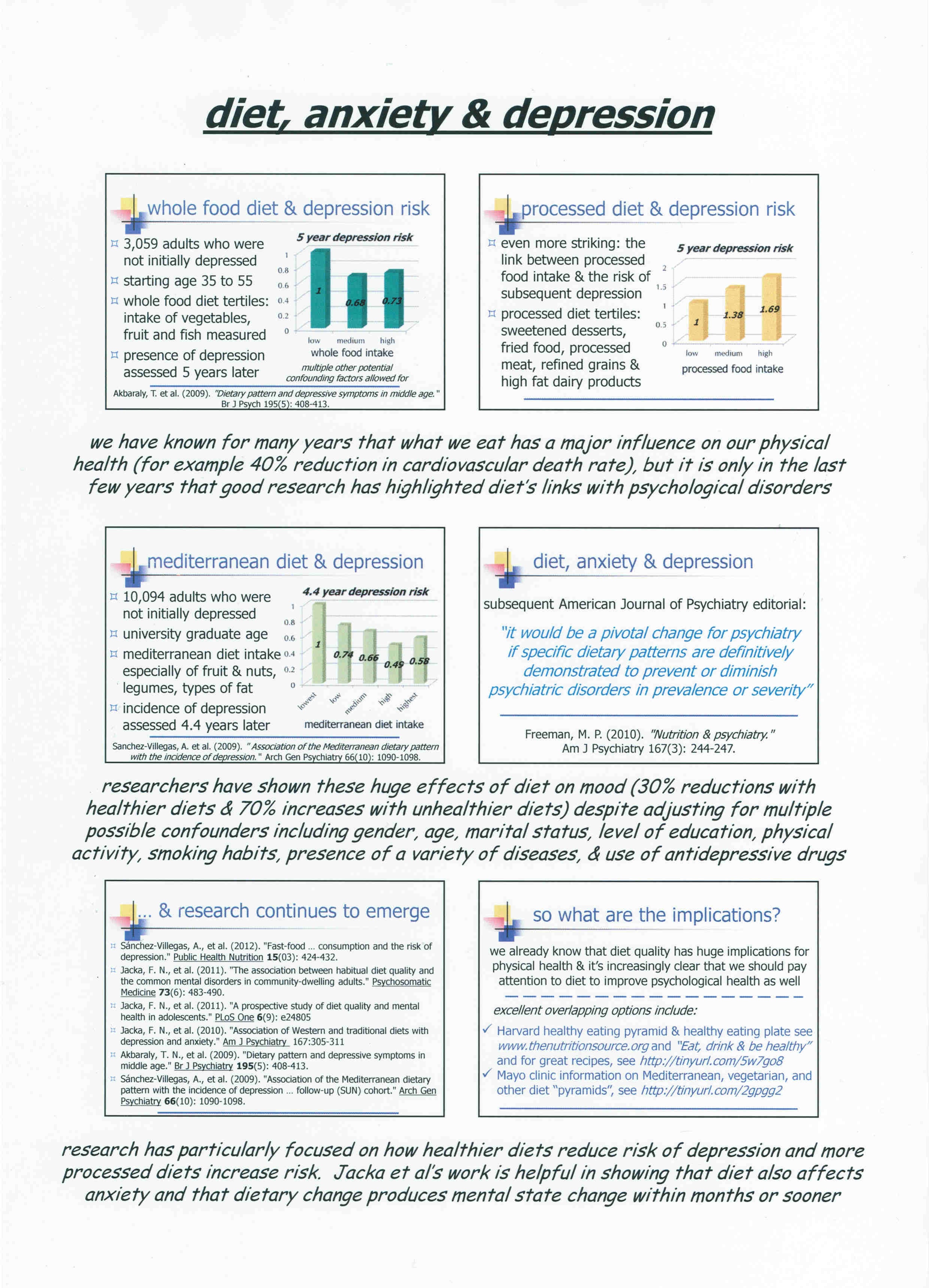So what dietary advice should we be following - for psychological as well as physical health?
Last updated on 21st February 2017
A couple of days ago I wrote a blog post that I think makes a very important point - "Emerging research on diet suggests it's startingly important in the prevention of anxiety & depression". Much of what the post said is downloadable in Powerpoint and can be printed out as a six-slides-to-a-page handout that looks like this:

So what dietary advice should we be following - for psychological as well as physical health? Well, I'm a big fan of Harvard School of Public Health's website "The Nutrition Source". They put the key points delightfully straightforwardly saying "The answer to the question "What should I eat?" is actually pretty simple. But you wouldn't know that from news reports on diet and nutrition studies, whose sole purpose seems to be to confuse people on a daily basis. When it comes down to it, though - when all the evidence is looked at together - the best nutrition advice on what to eat is relatively straightforward: Eat a plant-based diet rich in fruits, vegetables, and whole grains; choose foods with healthy fats, like olive and canola oil, nuts and fatty fish; limit red meat and foods that are high in saturated fat; and avoid foods that contain trans fats. Drink water and other healthy beverages, and limit sugary drinks and salt. Most important of all is keeping calories in check, so you can avoid weight gain, which makes exercise a key partner to a healthy diet.
What I find especially helpful about their evidence-based approach is their use of the downloadable PDF diagram of the "Healthy eating plate" (see below). I routinely use this as a key handout when giving dietary advice. On the back I print a further simple set of major points from the Harvard site. So, as a health professional working mainly with psychological & wellbeing issues, I use this delightfully clear two sided "Healthy eating plate" plus supportive major points leaflet all the time. I also give people the six-slides-to-a-page "Diet, anxiety & depression" sheet shown further up this post. The "Healthy eating plate" really helps with what a good meal should look like:

Copyright © 2011, Harvard University. For more information about The Healthy Eating Plate, please see The Nutrition Source, Department of Nutrition, Harvard School of Public Health, www.thenutritionsource.org, and Harvard Health Publications, health.harvard.edu.
The final piece in the jigsaw puzzle for me is the great downloadable PDF diagram of the "Healthy eating pyramid" (see below). The "pyramid" is more about the what-should-I-put-on-my-shopping-list territory. Again I tend to print out a series of associated key points about the pyramid from the Harvard site on the back of the diagram. Actually these key points run to four pages so, with the pyramid diagram, it comes to a somewhat longer (but extremely worthwhile) third handout.

Copyright © 2008. For more information about The Healthy Eating Pyramid, please see The Nutrition Source, Department of Nutrition, Harvard School of Public Health, www.thenutritionsource.org, and Eat, Drink, and Be Healthy, by Walter C. Willett, M.D., and Patrick J. Skerrett (2005), Free Press/Simon & Schuster Inc.
Of course there are other dietary approaches that are also very healthy, although in the end what you actually eat is likely to contain the same kind of mix of ingredients. See for example Mayo Clinic's "Pyramid or plate? Explore these healthy diet options", the excellent NHS "Eatwell plate" & associated advice, and the Scottish government's helpful "Eat healthier" advice. What has become increasingly clear is that, just like our physical health, our psychological health is powerfully affected by the food we eat.
